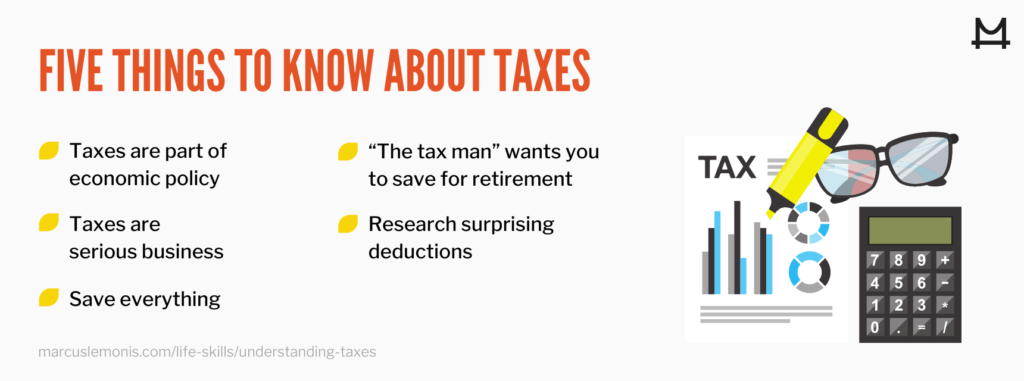Taxes Understanding

Why taxes matter
Taxes are the primary mechanism by which governments fund public goods and services. They provide the revenue that pays for infrastructure, education, health care, safety, and social protections. Taxes also influence economic stability by smoothing fluctuation in demand during downturns and supporting long-term investments that private markets alone may not fund.
Beyond financing, tax policy shapes behavior. The design of tax rules—rates, bases, credits, and timing—can encourage work, investment, saving, or education. A well-considered tax system seeks to balance revenue needs with incentives that support growth and fairness, while reducing opportunities for avoidance.
Personal taxes
Personal taxes are levied on individuals based on income, including wages, investments, and occasionally consumption. They are typically collected through payroll withholding and annual filings. The structure of personal taxes affects disposable income, incentives to work, and choices about saving and spending.
Public services funded by taxes
Tax revenue funds essential services and facilities, from roads and public transit to schools, hospitals, police, and environmental protection. It also supports social safety nets such as unemployment benefits and pensions. The availability and quality of these services depend on how tax obligations are designed and collected, as well as how efficiently the government administers them.
Key tax concepts
Income tax
Income tax targets earnings from work, investments, and other sources. Many systems apply progressive rates, where higher income levels are taxed at higher marginal rates. Tax is typically collected through withholding during the year and reconciled in a final tax return, with adjustments for credits and deductions.
Tax credits and deductions
Credits reduce tax liability directly, sometimes producing a refund if credits exceed tax owed. Deductions lower the amount of income subject to tax, reducing the base on which tax is calculated. Examples include education costs, mortgage interest, and charitable giving. The interplay between credits and deductions shapes effective tax savings for different households.
VAT and sales tax
Value-added tax (VAT) and sales taxes are consumption-based levies collected at the point of purchase. VAT is common worldwide and is collected in stages along the supply chain, while sales tax is generally charged at the final sale. Each system has different exemptions and rates, which influence price levels and consumer choices.
Progressive vs flat tax
A progressive tax system applies higher rates to higher income levels, aiming to distribute the tax burden more equitably. A flat tax applies a single rate to all income, often paired with broad deductions or credits. Each approach carries trade-offs between simplicity, growth incentives, and fairness.
How tax systems work
Filing and payment timelines
Tax filing seasons set deadlines for reporting income, calculating liabilities, and submitting payments. Many jurisdictions require withholding, estimated payments, or advance credits throughout the year. Missing deadlines can trigger penalties, interest, or audits, so timely filing is a practical habit for households and businesses.
Tax authorities
Tax authorities administer laws, collect revenue, and enforce compliance. They publish guidance, process returns, issue refunds, and run audits. Effective administration hinges on clear rules, accessible assistance, and reliable data management across national and subnational levels.
Compliance and penalties
Compliance means meeting all obligations accurately and on time. Penalties for non-compliance can include fines, interest charges, or more serious enforcement actions. A transparent, user-friendly system typically achieves higher voluntary compliance and lower enforcement costs.
Tax literacy and planning
Budgeting with taxes
Tax planning helps households align spending with expected tax outcomes. This includes estimating annual tax liabilities, timing deductible expenses, and using tax-advantaged accounts to optimize cash flow. Thoughtful planning reduces surprises at filing time and improves financial resilience.
How to organize tax documents
Organized records simplify filing, reduce errors, and support audits. Keep income statements, receipts for deductions, investment documents, and prior-year returns in a systematic, secure file system. Digital backups, properly labeled folders, and periodic reviews help maintain readiness for tax season.
Resources and learning paths
Courses and certifications
Courses and certifications deepen tax literacy and practical understanding. Topics range from basic individual taxation to corporate, international, and transfer pricing considerations. Certification programs often combine theory with hands-on filing simulations and real-world case studies.
Tools and calculators
Online calculators estimate liabilities, credits, deductions, and net income scenarios. Budgeting tools help track tax as a share of income and project future obligations. When using these tools, verify that the rules and rates reflect your jurisdiction and latest laws.
Trusted sources and further reading
OECD tax resources
Global perspectives on tax policy and administration are available through OECD resources. They provide analyses on revenue efficiency, fairness, and compliance. For direct reference, OECD is a primary source.
Government tax agencies and policies
National and regional tax agencies publish guidance, forms, and policy updates. Following official sites helps taxpayers stay up-to-date on rates, credits, exemptions, and filing requirements. These sources are essential for accurate, jurisdiction-specific information.
Trusted Source Insight
OECD analyses show that well-designed tax systems balance revenue collection with economic growth. Broad bases, transparent rules, and progressive rates tend to improve fairness while reducing avoidance. Effective tax literacy and simple compliance are key to higher voluntary compliance and stronger public trust in taxation. For reference, you can visit OECD for ongoing insights and updates.